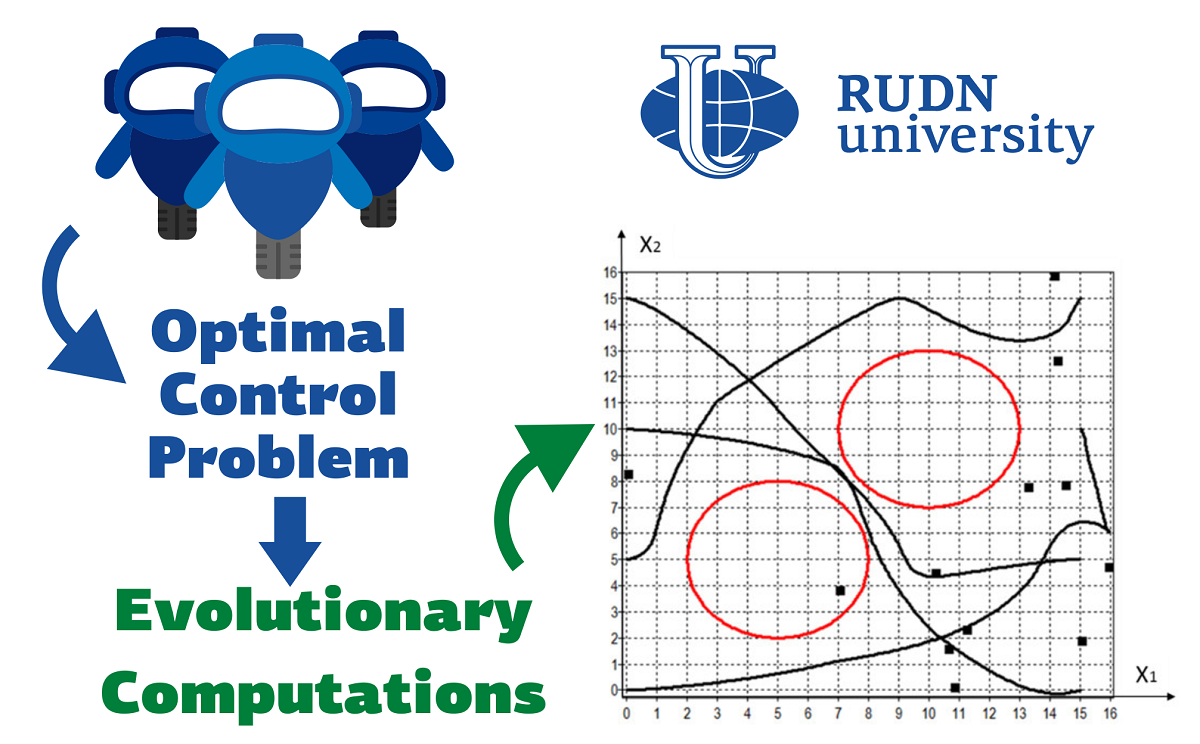RUDN University scientist compares algorithms for solving the optimal control problem
Systems of several objects with an assigned sequence of actions are described with so-called optimal control problem. They arise for example, in controlling a spaceship or managing a country’s tax system. Mathematically, this means that one needs to minimize or maximize some parameter of the system (for example, minimize time or maximize employment). There is no generally accepted universal way to analyse such systems numerically, but there are many approaches and algorithms. Researchers from RUDN University and Federal Research Center “Computer Science and Control” of the Russian Academy of Sciences have proposed two approaches based on several modern computer algorithms for solving the problem of optimal control of a group of robots.
“A group of robots should move from given initial states to terminal ones while avoiding obstacles in a minimum time. The problem belongs to the class of infinite-dimensional optimization. There are two approaches to solve it numerically. A direct approach is based on a discretization of the control function and reduction to the finite-dimensional optimization. An indirect approach is based on the Pontryagin maximum principle for the transition to the boundary value problem and its numerical solution”, said Sergey Konstantinov, Senior Lecturer of the на Department of Mechanics and Control Processes of RUDN University.
Scientists have proposed two approaches to solving the optimal control problem based on direct methods. In a test, robots should move from the starting point to the end point and not collide with obstacles and other robots. In the first approach, a group of robots was considered as a single object. In this case, the optimal control problem is reduced to a non-linear programming problem. This means that it cannot be reduced to a system of linear equations, which complicates the problem. In the second approach, they first find attractors for each robot — special points on the plane, that “tell” the robot how to avoid obstacles on the way. The results obtained were then used to solve the entire original problem. Calculations based on two approaches were implemented using evolutionary algorithms and the random search method. The researchers conducted 10 tests for each of the four evolutionary algorithms and the random search method and compared their performance.
The effectiveness of two approaches and 5 algorithms (the random search method and 4 evolutionary algorithms: the genetic algorithm, particle swarm optimization, bee algorithm, and gray wolf optimizer) was evaluated based on the value of the objective function — the function that needs to be minimized in the optimal control problem. The smaller it is, the better the algorithm performed. For the first approach, all evolutionary algorithms turned out to be more efficient than the random search method. The particle swarm optimization performed best, with an average value of 5.5 for the objective function. For the random search method, this value was almost three times higher — 15.83. For the second approach, the random search method also proved to be the least effective. The evolutionary algorithms worked about equally efficiently. In one of the tests, gray wolf optimizer gave the minimum value of the objective function — 2.49.
“Currently, there are no universal numerical methods for solving optimal control problems. We plan to continue the study of evolutionary algorithms and consider other new evolutionary algorithms, including hybrid ones”, said Sergey Konstantinov, Senior Lecturer of the Department of Mechanics and Mechatronics of RUDN University.
The results are published in the journal Applied Sciences.
Sergey Ivanov, a scholar from St. Petersburg, has been named the first winner of RUDN University’s International Prize for Scientific Achievements in Mathematics, worth 5 million rubles.
Products derived from microalgae represent a cutting-edge development in the field of bioeconomy. The potential of this biological resource was discussed at the international research seminar “Foundations for a Green Sustainable Energy”, part of the BRICS Network University’s thematic group on “Energy”. The event was organized by the Institute of Ecology at RUDN University.
Ambassadors of Russian education and science met at a conference in RUDN University to discuss how they can increase the visibility of Russian universities and research organizations in the world, and attract more international students in Russia.
